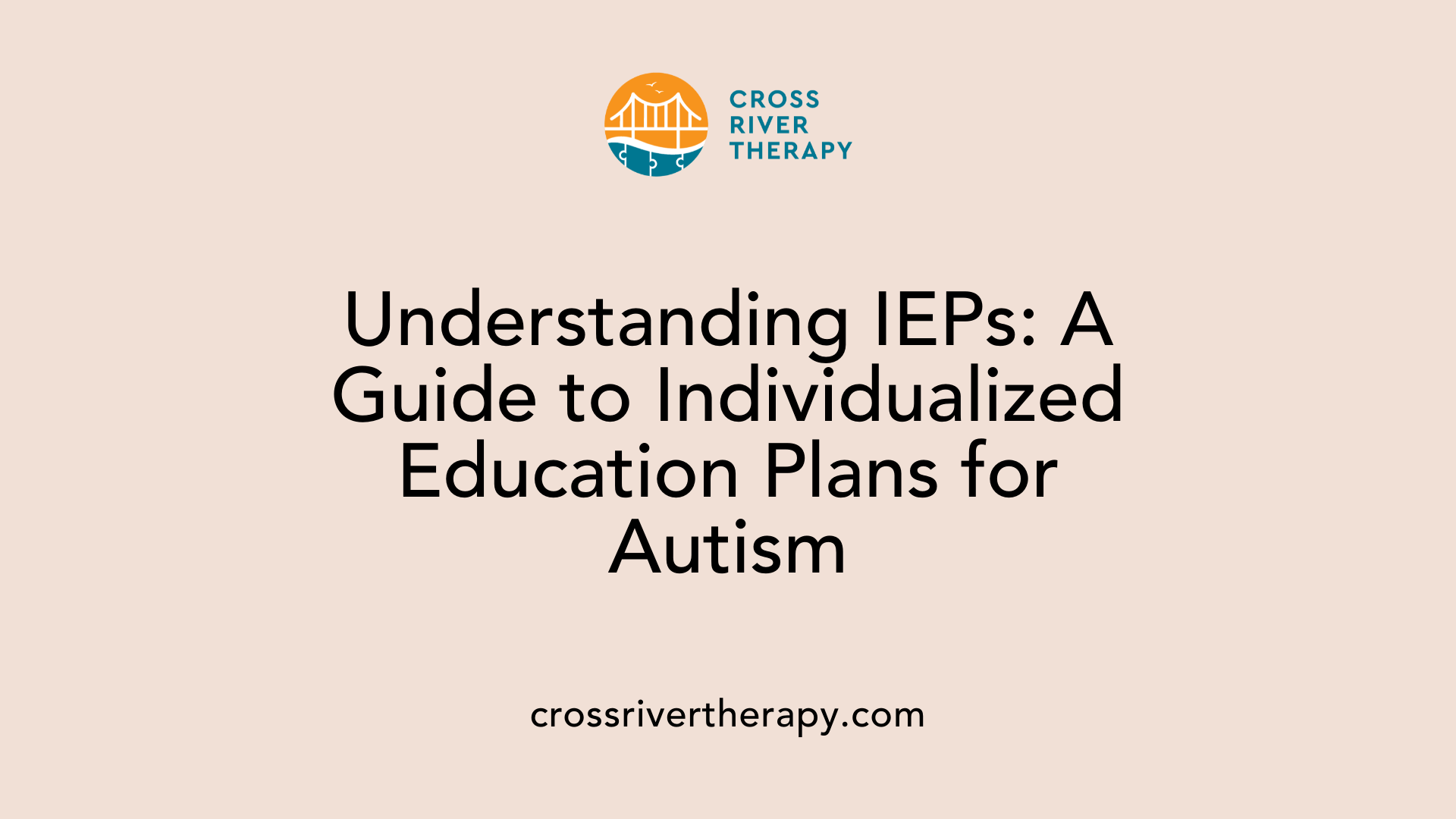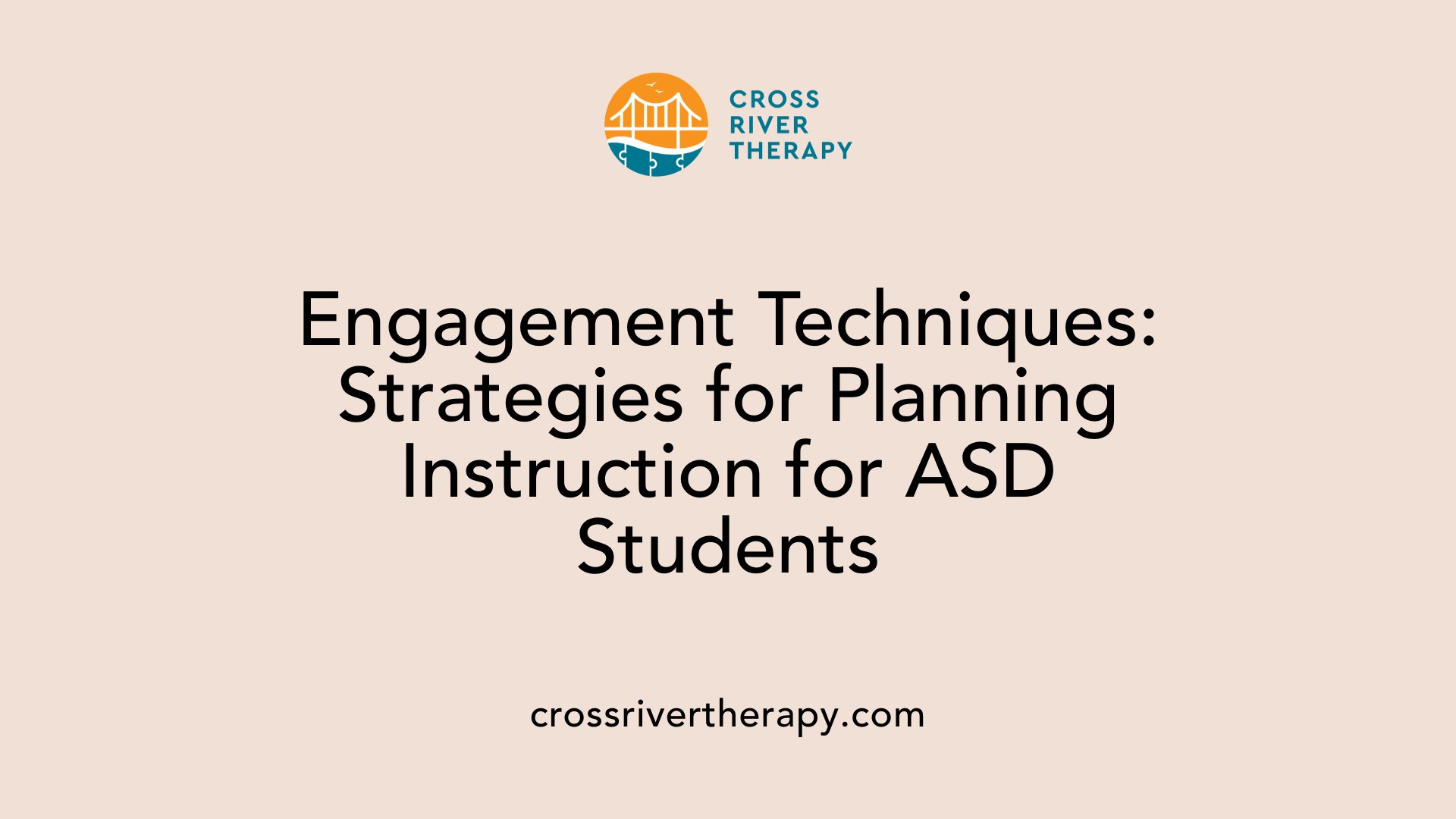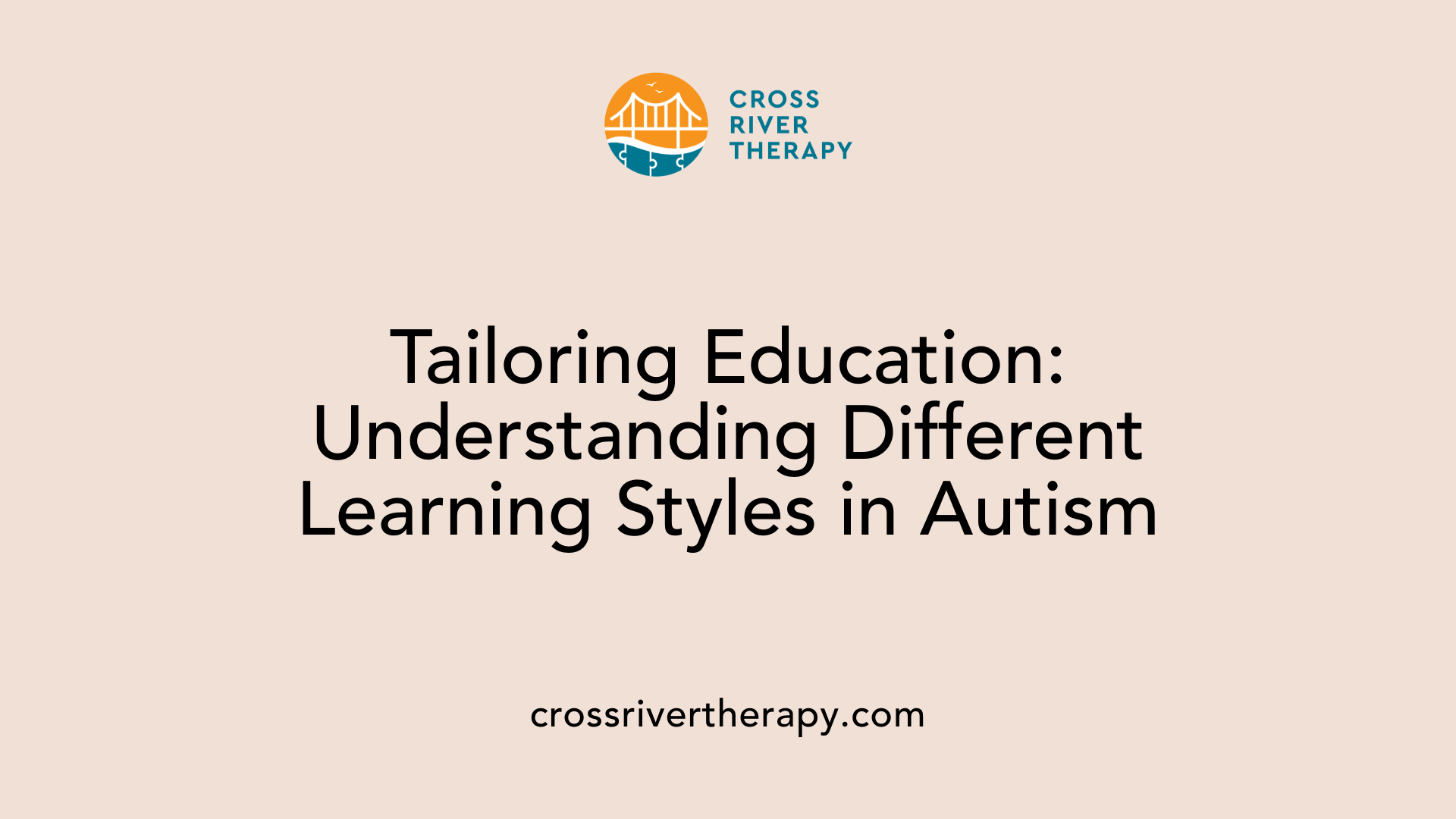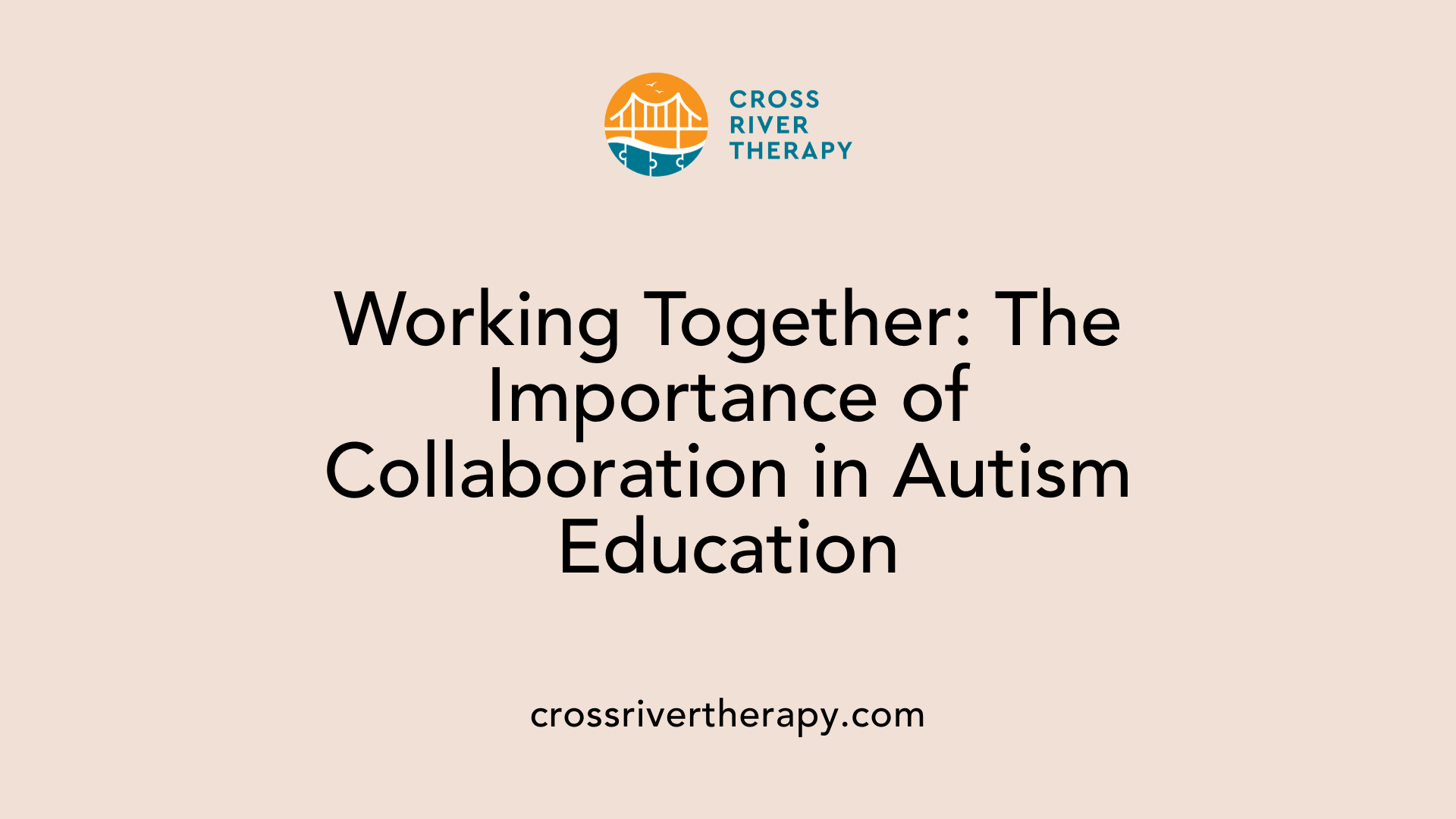Creating Autism Learning Plans
Crafting Effective Learning Strategies for Autistic Students
Understanding Autism Learning Plans
Developing effective learning plans for students with autism is crucial to ensure meaningful participation in educational activities. This article explores the essential components and strategies in crafting Individualized Education Programs (IEPs) and lesson plans tailored for children on the autism spectrum. By focusing on personalized approaches, educators can create conducive learning environments that address specific needs and promote both academic and social development.
Individualized Education Plans: Key Elements and Importance

What is an IEP plan for autism and its components?
An Individualized Education Program (IEP) for autism is a personalized educational plan designed to cater to the unique challenges faced by students with Autism Spectrum Disorder (ASD). It holds significant legal weight under the Individuals with Disabilities Education Act (IDEA), requiring that schools deliver tailored educational support.
The creation of an IEP begins with thorough assessments that highlight the child’s strengths and areas for growth. From these assessments, a dedicated team composed of parents, educators, and specialists collaborates to develop the plan.
Key Components of IEPs
Key components of an IEP consist of:
- Present Levels of Performance: This section describes the child's current academic achievements and functional performance.
- Measurable Annual Goals: These are specific, achievable objectives that must be tracked over the year, covering academic, social, and behavioral development.
- Services and Accommodations: The IEP specifies the special education services required, such as speech therapy or behavioral support, along with any necessary accommodations.
- Transition Plans: For older students, the IEP includes plans to prepare for post-secondary education or the workforce.
Regular reviews and updates to the IEP are crucial, allowing for adjustments that reflect the student’s evolving needs and ensuring progress toward their educational goals.
Legal Implications
The legal framework of the IEP guarantees students access to an appropriate educational environment, which is essential for their academic progress. Schools are mandated to adhere to these plans, fostering accountability within the educational system. This structure not only protects the rights of students with autism but also ensures that they receive the support necessary for success.
Collaboration in IEP Development
Collaboration is a cornerstone of effective IEP development. Parents provide invaluable insights into their child’s unique capabilities and challenges, which enhances the planning process. Effective IEP teams engage in ongoing communication, guaranteeing that strategies and services align with the student's best interests. By working together, educators and families can collectively motivate students with autism, creating a nurturing and supportive learning environment that champions their growth and inclusion.
Strategies for Instructional Planning for ASD Students

Techniques to Engage ASD Students
Planning instructional activities for students with Autism Spectrum Disorder (ASD) demands careful consideration of their unique needs. Engaging methods might include:
- Incorporating special interests: Using topics that resonate with a student can stimulate involvement and focus.
- Sensory integration activities: Utilizing fidget toys and sensory bins promotes engagement and helps manage sensory overload.
Role of Visual Aids
Visual supports are crucial in delivering effective instruction. They help clarify concepts and foster understanding even before verbal communication takes place.
- Visual schedules: These outline daily activities and transitions, allowing students to anticipate what’s coming next, significantly reducing anxiety.
- Emotion cards: Using these in lessons can enhance recognition of feelings in themselves and others, which is vital for social skills development.
Classroom Organization Strategies
An organized classroom structure serves as a foundation for successful learning experiences. Key strategies include:
- Designated sensory spaces: Creating areas equipped with calming materials can provide students with a retreat when overwhelmed.
- Clear routines: Establishing predictable class schedules supports smoother transitions and helps students navigate daily tasks.
How would you plan and implement instructional activities for students with ASD?
To plan and implement activities, it is essential to use visual schedules to clarify daily routines, which can reduce anxiety and promote independence. Clear, concrete language should be utilized to ensure students understand instructions and can complete tasks more effectively. Positive reinforcement strategies, such as token economies or praise, can motivate students and encourage desired behaviors. Preparing students for transitions through predictable routines is crucial for minimizing anxiety during changes. Additionally, creating sensory-friendly spaces and fostering positive peer relationships through collaborative activities will enhance both social interactions and engagement in learning.
Understanding Learning Styles in Autism

What is the best learning style for autistic students?
The best learning style for autistic students often involves a combination of visual, auditory, and kinesthetic approaches, tailored to their individual needs. Many autistic children are highly visual learners, benefiting from visual aids such as graphic organizers, picture schedules, and video modeling, which help in processing and retaining information effectively.
While auditory learning may be less common among these children, strategies like repetition and the use of recorded lessons can support those who prefer auditory input. This can help in reinforcing concepts and providing additional avenues for learning. Kinesthetic learners thrive with hands-on activities, so it's crucial that lessons incorporate movement and sensory experiences to enhance their engagement and focus.
Creating an effective learning environment for students with autism means understanding their unique preferences and challenges. This can involve utilizing a variety of techniques, including:
- Visual Supports: Graphic organizers and visual schedules are vital.
- Auditory Cues: Repetition and recorded lessons for those who respond to sound.
- Kinesthetic Activities: Hands-on tasks, movement breaks, and sensory experiences.
Ultimately, an individualized education plan (IEP) that accounts for each student's strengths, interests, and challenges is essential for optimizing their learning experience. This personalized approach not only helps meet educational goals but also fosters a supportive learning environment.
Modifying Lesson Plans for ASD
How to modify a lesson plan to suit students with autism?
Modifying lesson plans to cater to students with autism is essential for fostering an inclusive learning environment. One of the most effective strategies is to implement visual schedules. These schedules help to reduce anxiety and establish predictability in daily routines, making transitions smoother for students.
Additionally, utilizing clear communication with short sentences and incorporating visual aids greatly enhance understanding. Visual learning tools can address varying comprehension levels, facilitating more effective participation in lessons. Positive reinforcement strategies can motivate students, promoting engagement and building essential social skills over time.
A well-structured learning environment with flexible seating arrangements empowers students to find positions that help them focus. Providing sensory tools such as noise-cancelling headphones or fidget toys can significantly improve concentration during lessons. It is equally important to allow for choice and autonomy in activities, as this can help students feel more invested in their learning.
What other tools can enhance lessons for students with autism?
Incorporating students' special interests into lesson plans is an effective way to engage them and tailor learning experiences. For example, lessons can include topics that resonate with students, making activities more appealing and less taxing. By creating a dynamic learning atmosphere that emphasizes choice, structure, and interests, educators can help students with autism reach their full potential.
Free Resources for Autism Education: Why They Matter
Availability of Free Educational Resources
The demand for free educational resources tailored for autism education is on the rise. Educators and parents alike are discovering the convenience and applicability of downloadable materials, such as PDFs, that can facilitate the creation of autism learning plans. These resources often provide structured lesson plans, worksheets, and interactive activities designed for students aged 6 to 18 years. By making these tools available at no cost, a wider audience can access quality educational materials, enhancing the teaching and learning experiences for those involved.
Advantages of Using Downloadable Resources
Utilizing downloadable resources offers numerous benefits to educators and parents. These materials cover crucial areas such as Social Communication, Social Interaction, and Emotional Regulation, promoting essential skills for autistic learners. The ready-to-use nature of these resources saves time, allowing teachers to focus more on instruction rather than material preparation. Moreover, resources that encompass multiple subjects enable integrated and thematic learning approaches, enriching students' educational experiences.
Here are some notable aspects:
In conclusion, free resources like PDFs are pivotal in supporting the educational journey of students with autism, enabling effective lesson planning and promoting inclusive classroom environments.
The Power of Lesson Plan Templates and Routine
Streamlining Lesson Plan Development
In special education, especially within autism classrooms, lesson planning serves as a foundation for effective teaching. Using standardized lesson plan templates simplifies lesson development. This ensures that all essential elements, such as objectives, teaching materials, and activities tailored to individual student needs, are consistently included. These templates also provide guidance for paraprofessionals and staff, clarifying lesson goals and enhancing collaboration.
Yearly Planning Guide
Creating a yearly planning guide is vital for organizing educational content over the academic year. This guide outlines key thematic lessons, weekly dates, and specific focuses such as emotional learning or colors of the month. By visualizing these topics ahead of time, educators can effectively coordinate teaching efforts, allowing for adjustments that cater to each student's diverse learning styles and needs.
Visualizing Educational Goals
Having a structured planning routine not only enhances teacher efficiency but also promotes accountability among team members. A well-organized approach to lesson planning enables educators to share and refine their goals regularly. This clarity fosters an environment of inclusivity, where students with autism can thrive both academically and socially, as lessons can be adapted in accordance with individual learning requirements.
Collaborative Approaches in Autism Education

Importance of Educator and Caregiver Collaboration
Collaboration among parents, educators, and specialists is essential in autism education. This teamwork leads to well-rounded support for students with autism, utilizing insights from each group to create effective Individualized Education Programs (IEPs). Caregivers offer valuable knowledge about their child's unique needs, preferences, and strengths, enabling educators to tailor instruction accordingly.
Regular communication ensures that strategies employed at home align with those in the classroom, providing a consistent learning experience. Parents' participation in IEP meetings is crucial, as they have insights that help shape the education plan, making it more personalized and effective.
Tools for Effective Communication
Effective communication is facilitated through various tools designed to support collaboration:
- IEP Cheat Sheets: Simplified summaries of each student’s goals can keep everyone informed about progress and focus areas.
- Visual Aids: These may include charts and schedules that help convey expectations and routines clearly to both educators and parents.
- 'About Me' Sheets: Collecting information about each child's likes and needs assists in creating individualized lesson plans.
These tools not only improve engagement and transparency but also foster a supportive environment where everyone works towards common educational objectives.
Creating Inclusive Learning Environments for ASD

Sensory-Friendly Spaces
Creating sensory-friendly spaces is essential in classrooms for students with Autism Spectrum Disorder (ASD). These environments can include elements such as soft materials, fidget toys, and adjustable lighting. These adjustments help to minimize sensory overload and provide students a safe retreat when feeling overwhelmed. Additionally, noise-canceling headphones can significantly enhance focus during lessons, enabling students to manage distractions effectively.
Inclusive Classroom Practices
Adopting inclusive classroom practices is vital for helping students with autism learn alongside their peers. This includes using visual aids and clear communication strategies to break down tasks into manageable steps. Collaborative group activities can promote peer relationships and acceptance among students, further facilitating social interaction and cooperative learning. By fostering an environment where both neurotypical and neurodivergent students engage meaningfully, all learners can thrive academically and socially.
Social Skill Development
Social skill development is another critical component in creating inclusive learning environments. Activities like role-playing, using emotion cards, and structured peer-interaction opportunities can enhance students' abilities to recognize social cues and manage interactions. Incorporating their specific interests into lessons not only makes learning more engaging but also encourages authentic connections with peers. Regular feedback and structured support can help students progressively build their social competencies.
Implementing Assistive Technologies in Lesson Plans
Use of technology for engagement
Assistive technologies play a vital role in special education, particularly for students with autism. These tools can significantly enhance engagement by providing interactive and sensory-rich experiences that cater to individual learning preferences. For example, apps that utilize visual schedules can help students understand their daily routines, reducing anxiety and promoting independence.
Incorporating educational software aimed at developing social skills can further encourage interaction among peers. Tools like social stories and multimedia resources allow students to visualize concepts, making learning more relatable and memorable.
Adapting technology for educational goals
When creating lesson plans, it is essential to adapt technology according to the specific educational goals outlined in a student’s Individualized Education Program (IEP). This includes selecting software and devices that support communication, such as speech-generating devices or tailored communication apps, to enhance interactions.
Additionally, choosing adjustable technologies ensures that students’ diverse needs are met. For example, leveraging wearables for sensory feedback can help students self-regulate during lessons. Integrating assistive tech not only enriches learning experiences but also fosters an inclusive environment where students with autism can thrive alongside peers.
Sensory Integration through Structured Activities
Sensory Play Benefits
Sensory play is crucial for children with autism as it helps facilitate exploration and promotes cognitive growth. By engaging in sensory-rich activities, these students can improve their focus, emotional regulation, and spatial awareness. This form of learning is not only therapeutic but also enjoyable, allowing children to learn through touch, sight, and sound.
Activities that Support Sensory Needs
Incorporating various activities into the classroom can cater to sensory needs:
- Fidget Toys: Tools like stress balls and textured items can help children self-regulate and maintain focus during lessons.
- Sensory Bins: Filling bins with rice, beans, or water beads provides tactile exploration opportunities, encouraging imaginative play.
- Calming Zones: Creating spaces with noise-canceling headphones and soft materials can help students retreat when feeling overwhelmed.
These structured activities ensure that sensory integration is purposeful, fostering an inclusive and engaging classroom environment.
Fostering Independence and Social Skills through Education
Promoting Autonomy
Fostering independence in students with autism is paramount for their growth and development. Lessons should incorporate activities that allow students to make choices, practice decision-making, and develop self-help skills. Consistent routines and visual schedules create a reliable framework that promotes autonomy in daily tasks, easing students into more independent learning behaviors.
Peer Engagement Strategies
Social interaction is crucial for students with autism. Implementing structured peer engagement activities within lesson plans can reduce feelings of isolation. For example, collaborative group projects tailored to different learning levels not only foster a sense of teamwork but also enable students to build friendships and develop social skills in a natural setting. Activities like buddy reading or cooperative games encourage meaningful interactions among peers.
Building Self-Advocacy Skills
Teaching self-advocacy is essential for empowering students with autism. This can be achieved by encouraging them to express their needs and preferences, particularly in relation to their Individualized Education Programs (IEPs). Utilizing tools like 'About Me' sheets helps students articulate their likes and dislikes, fostering a sense of agency. Practicing role-playing scenarios can also prepare students to communicate effectively in various social situations, ultimately enhancing their confidence and self-awareness.
Building Future-ready Learning Plans
The process of creating autism learning plans involves careful consideration of individual needs, strengths, and preferences. By leveraging various strategies such as IEPs, collaboration, and the integration of sensory-supportive tools, educators can develop inclusive environments that nurture both academic and social success. As the landscape of autism education continues to evolve, ongoing adaptation and innovation in learning plans will be essential in empowering autistic students to achieve their fullest potential.
References
- Lesson Planning in the Autism Classroom: How to Make it a Success
- How To Create A Year-Long Plan - The Autism Helper
- Lesson Planning for an Autism Classroom
- Autism in the classroom: Strategies for success
- Prepare Your Child With Autism For School and Learning - Opal
- 24 Classroom Activities for Kids with Autism | Waterford.org
- Individual activity learning plan | Autism Awareness Australia
- Creating Autism-Friendly Plans - Ambitions ABA Therapy



